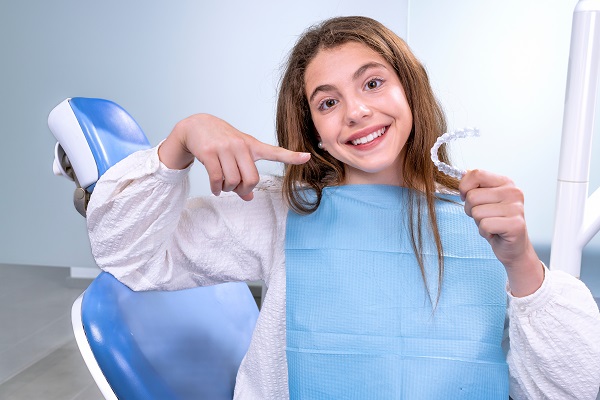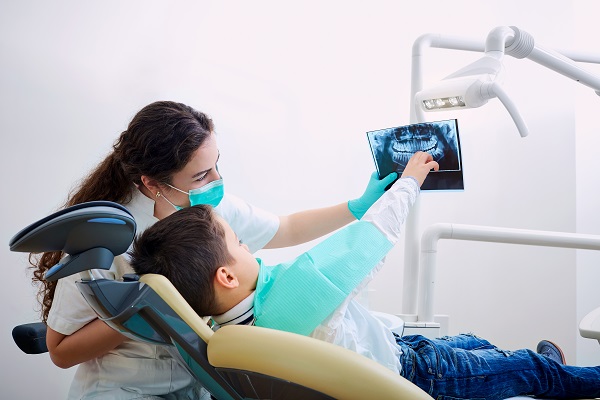5 Signs You Should See An Orthodontist

An orthodontist is not the same as a family dentist. While both work in the field of dentistry, each has a different role. Some people think that visiting an orthodontics clinic is only to get kids braces. In reality, an orthodontist works with adults and young children, and does more than just apply braces. Learn the signs that would prompt a visit to an orthodontist.
Fix the problem by going to an orthodontist
Fortunately, an orthodontist can correct several problems associated with the teeth, mouth and jaw. With additional education and training, they fix even significant issues. For people who suspect they need to see someone other than their regular dentist, scheduling an appointment is the solution. Discover some of the things to consider.
1. Beyond normal dentistry
A dentist plays a vital role in a person maintaining good oral health. Dentists are responsible for a variety of things, including cleanings, examinations, fillings, and crowns. People should continue to see the dentist as part of a regimen to keep their mouth healthy. A dentist can also help whiten teeth. However, sometimes a patient needs a different treatment other than what a dentist can provide. In that case, it is a good idea for patients to see an orthodontist.
2. Overcrowding
Sometimes, children are born with large teeth or small jaws. Either way, once adult teeth begin to develop, it creates a problem of overcrowding. At the same time, teeth can shift as a person grows older. Regardless of the scenario, someone with too many teeth to fit the available space needs to see an orthodontist. As a treatment, the orthodontist would recommend tooth extraction, braces, invisible retainers or a combination of these. Of course, that depends on the patient, the exact cause and the severity of the problem.
3. Multiple treatments
The most obvious sign of needing to see an orthodontist has to do with misaligned or crooked teeth. Often, the correct treatment comes in the form of braces. Along with the traditional metal type, orthodontists can apply braces made from ceramic. Another option is applying lingual braces that adhere to the backside of the teeth or use some kind of clear aligner system. The orthodontist determines the appropriate option during the initial examination.
4. Over, under or open bite
An orthodontist helps people with abnormal bites, including an overbite, underbite and open bite. Since both an overbite and underbite can lead to various dental issues, it is important to have this corrected. Otherwise, a person could experience premature tooth wear. As for an open bite, this occurs when the top and bottom sets of teeth do not touch. As a result, people struggle to chew or bite down.
5. Mouth or jaw pain
If people begin to experience pain in the mouth or the jaw, they should see an orthodontist. For this type of issue, there could be any number of underlying factors. One, in particular, is TMJ. With this, the jaw has a misalignment. As a result, it basically pops in and out of place when chewing, yawning or eating.
Know the signs
Whether for yourself or your children, if something seems out of the ordinary, you should visit your family dentist. But if the family dentist cannot correct the problem, you will get a referral to an orthodontist. That individual will conduct the appropriate testing to identify the problem. From there, the orthodontist will recommend the correct treatment.
Request an appointment here: https://www.drsallysong.com or call The Orthodontic Center Of Wayne - Dr. Sally Song at (973) 696-5220 for an appointment in our Wayne office.
Check out what others are saying about our services on Google: Read our Google reviews.
Recent Posts
Even though braces are common among teenagers, getting them is a new orthodontic experience for every patient. Teens and their parents tend to have many questions about braces and other orthodontic treatments for teens, when to get braces, and what having braces will be like. Here are some of the most common questions orthodontists hear…
The primary goal of early orthodontic treatment is to prevent and fix bite misalignments. Several causes, including genetics, the premature loss of primary (baby) teeth, and harmful oral habits (like thumb sucking) may lead to such anomalies. Orthodontic abnormalities might be congenital or occur during early childhood. Straight teeth can reduce the incidence of dental…
Invisalign® has changed how willing teenagers –– and everyone else –– are to start teeth straightening treatments. It provides an alternative to traditional metal braces that is virtually impossible to detect. Invisalign® treatments work the same way conventional braces work, the aligner trays exert a force on the patient's teeth pushing their teeth into better…
Oral health is foundational to good overall health. Through the help of an orthodontist and bite correction, difficulties with chewing or speaking can be overcome. The inability to ingest food or clearly articulate impacts both physical and mental health. Bite correction has the potential to change the course of an individual’s health and wellness.Changes in…


